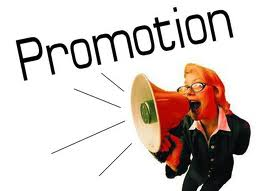Part 2 of the new 4Ps of Marketing focuses on Promotion, the only carry-over from the original 4Ps of Marketing, but with a twist. Promotion in today’s marketing emphasizes education and information much more to distinguish your brand and differentiate your product or service from competitive offers.

As you have experienced first hand, there numerous ways to advertise and promote your product or service depending on the media you select. Marketing companies, for example, rely heavily on Internet advertisement, special events, endorsements, and newspapers to advertise and promote their products and services.
The key question for any small business is where and how to cost effectively get across your marketing messages to your target market? For your small business, will you reach your target audience by TV, or radio, or on billboards? What about direct marketing, flyers, door hangers, or on the Internet? Those are a few of the more common advertising and media choices to consider to help you get the word out.
Now, what’s the appropriate promotional strategy to market your product or service?
Push-pull marketing are differing strategies that can be used to help you promote your business and reach a target audience or market. Push marketing generally refers to marketing through the supply chain – i.e. wholesalers, distributors, etc. rather than by marketing directly to consumers. With push marketing, you push your content/product/service to the target audience which may or may not be aware of it.
Push marketing programs offer special incentives to distribution partners who promote your product or service. These incentives can include wholesale discounts, SPIFFs, bonuses, or other types of support. Each of these has a singular goal – to accelerate sales growth by having the wholesaler or distributor promote your product or service to their end-user customers.
Pull marketing focuses on education and information in building your business or personal brand directly to the consumer. With pull marketing, the prospect pulls your content/product/service to them, because of their interest in learning more about it. Pull marketing is all about engaging prospects in meaningful ways that attract them to you. So, quality content, interactive communication, perceived value and trust building are keys to effective pull marketing strategies.
With the growth of the Internet and social media, referral or word-of-mouth marketing has become more pervasive as a form of pull marketing. Most small businesses today obtain 90% or more of their new business through referral or word-of-mouth marketing. It is one of the most cost effective ways for a start-up or small business owner with a limited budget to market and promote their business.
Promotional marketing can also be a tool to create a sense of urgency on the part of the buyer to make a purchase decision sooner rather than later through a limited time, value offer – i.e. “Buy 1, Get 1 Free”, if purchased in the next 3 days. Other promotional ideas that can be used to attract consumers to you and increase your product or service sales include contests, coupons, free samples, etc.
For today’s marketing mix, you’ll need to strike a balance between the promotional strategies you employ in order to successfully promote your product or service to all targeted segments of your market. Why? Because each prospective customer or distribution channel is different, and will respond differently to the promotional strategies and offers you select to market your business.
By closely monitoring the ROI impact of your advertising and marketing investments, you will be able to determine which promotional strategies yield the most favorable returns for your particular business situation.
The next segment will focus on the 3rd of the new 4Ps of Marketing – Perception. So, check back in the next couple weeks for more, and let me hear your thoughts.
COPYRIGHT © 2010-11 John Carroll